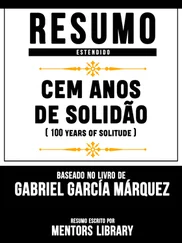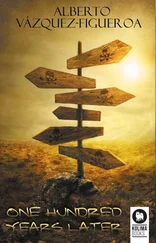The mathematician Pierre Quesnay (1910–1960) was teaching at the Sorbonne. His brother René (1914–1955) was a historian, a reputed specialist in the resistance to Romanization.
In a one-on-one with Ranvier, we spoke about the contacts we’d made during my trip in the spring of ’39. He remembered how I had gone through Strasbourg on my way back and asked me how the seminar there had gone. I got the impression he’d already heard what happened and just wanted to hear how I was going to tell the story about the discussion with Silberberg, so I asked what had become of that little brat. 39I acted like I didn’t know his name and described him as “the tall Jew who worked with Pariset.” Obviously, Ranvier knew who I meant. Ranvier thinks Silberberg is still with the other Strasbourgers at Clermont-Ferrand, where he saw him last year, and is still working with Pariset. 40He told me Silberberg recently published two notes in Comptes rendus , one in December 1941 and the other a few weeks ago. I was surprised to hear that the Academy of Sciences is still publishing articles signed with a name like Silberberg. 41They’re not under his name, Ranvier said, but he refused to say any more. 42If I want to know, it’s not difficult, I just need to look in Comptes rendus , which doesn’t have that many articles on number theory, so I should be able to easily recognize his research. Maybe he even talks about his famous lemma. It would be even simpler to ask Morstauf, but maybe he doesn’t know about it. Still, it’s strange I didn’t notice those articles.
The Kürz collection at the University of N. contains a letter (mathematical in nature) from André Silberberg and some official reports on a trip Kürz took to Strasbourg in Mary 1939, during which he met Silberberg and had a discussion with him. Silberberg had declared that he knew how to prove a “fundamental” lemma, which Kürz did not manage to prove until after the war.
The town of Strasbourg was evacuated in September 1939, and its university withdrew to Clermont-Ferrand. Many students returned home after the Reich annexed Alsace in 1940 (after being blackmailed by the Nazi authorities). The university remained at Clermont-Ferrand, despite the threats and the creation of a “Reichsuniversität” in Strasbourg.
In conformity with the recommendations of the Occupation authorities and going beyond the letter of Vichy’s anti-Semite laws, scientific journals in the Occupied Zone eliminated all Jewish authors starting in the fall of 1941.
During this period, some French Jewish scientists published under pseudonyms, while others used another person’s name. One of the best known cases is that of Robert Gorenstein, who, though he was shut away in a psychiatric hospital, understood the significance of the first French anti-Semite laws and, starting in October 1940, changed his name on the articles he wrote to René Monod (then quickly went back to writing under his own name starting in September 1944). André Silberberg (1914–1945), mentioned here, used the pseudonym André Danglars.
June 7, 1942
Sunday again. Stopped to buy a few flowers from a stall on Boulevard Saint-Michel. Was taken aback by the gaze of the sales girl, who was looking at me with immense hatred — the pupils in her blue eyes were completely retracted. 43In thinking back on Morstauf’s students, for whom we waited in vain the other day, I’m not sure whether we’ve really known how to touch the hearts of the French, no matter what Georges C. says.
This mention of the girl’s gaze appears word-for-word in Jünger’s journal. It is possible that one of the two had this meeting, then they spoke to each other about it and the other attributed it to himself.
Starting today, Jews must wear the yellow star here as well. I wonder if this rule applies in a lunatic asylum. Of course I’m thinking about Gorenstein. They’ve done right to keep them from publishing. It would be too complicated, putting a star on articles written by star wearers. Yet if Silberberg is still managing to get his articles published… Again I think of Zach, over there in the east, who’s so good at recognizing Jewish mathematics and separating them from our Deutsche Mathematik. In any case, even in Russia, the winter must be over.
June 8, 1942
Assessment of these past few days in Paris: spent far too much time with Morstauf — I’m starting to get tired of his prayers and outpourings of love. He hardly spoke to me at all about mathematics. I wonder if he’s even working on anything.
Even so, huge difficulties in establishing contact with other colleagues.
But I still proved something, in the end. The little free time I’ve had here has been well spent. In Berlin, I never would’ve managed it. Ah! How far we are from that time, just six or seven years ago, when it was so easy to work. Especially since there were so few students at the university that we could devote all of our time to our research.
My last day. Today in Paris, tomorrow in Berlin. Had my breakfast in the Raphael’s restaurant. While there, met a Lieutenant Müller. 44Unlike the majority of the hotel’s inhabitants, he doesn’t work for the MBF 45at the Majestic Hotel, but on Avenue Foch, with the Gestapo, dealing with the Jewish question. His work consists of filling the trains being sent to Upper Silesia with Jews. He’s very proud to have come up with the idea of taking Jews who were arrested as terrorists and deporting them for being Jewish: no one is keeping count of the so-called “members of the Resistance” who’ve been imprisoned or deported. The convoys of Jews must each contain a thousand individuals. He was surprised to discover I’m a specialist in number theory. To be more exact, he was surprised that something called number theory exists. He explained his view of numbers, which is pragmatic and extremely precise. For him, the idea of “a thousand or so,” for example, doesn’t exist. What exists is 1,000, pure and simple.
Because this lieutenant had a very common name, it is hard to identify him. His view of numbers, also very common, does not help in determining who he is.
Militärbefehlshaber in Frankreich: German military command in France.
Kürz saved his train tickets. We therefore know that he indeed left Paris on June 8. Contrary to what is written here, he did not go straight back to Berlin, but went via N., where he stopped for at least one day, two or three perhaps.
In our century, systematic men like him will be the ones who make history, and they’ll be the ones we remember, perhaps. 46
CHAPTER VI. The Form of a City (N., 1943–2005)
Perhaps a shade of yellow, the little mutt looks grayish in the black and white photograph. The circumstances this image evokes (the season, the presence of several people, the special attention two of them are giving the dog) explains its cheerful air. The rhododendron bush, at the far left, is in bloom. It is summer. The left hand of one of the two men seated on the wooden bench pets the dog’s head resting on his neighbor’s thigh. Both of them have pipes in their mouths. To their right — that is, on the left side of the photograph — between the bench and the rhododendron, five people are seated in metal chairs around a garden table.
Where was this garden? One must open the map of the little town of N., sixty-two years after this photograph was taken.
On the map, the train station can be identified right away, thanks to the thick black lines of the rails superimposed on the bright colors used by the illustrator. The eye then distinguishes the river (blue) and the bridge, the town center, with its main square and pedestrian streets, and finally a neighborhood of individual houses surrounded by gardens. A soft shade of green has been chosen to represent this neighborhood. It is situated near the town center, but far enough from the railroad tracks that the noise and other disturbances from convoys going east (or west) would not be perceived. The streets in this neighborhood are all named after famous German scientists, philosophers, or writers (Bunsen, Gauss, Kant, Spankerfel, Humboldt, Riemann, Schiller…).
Читать дальше












